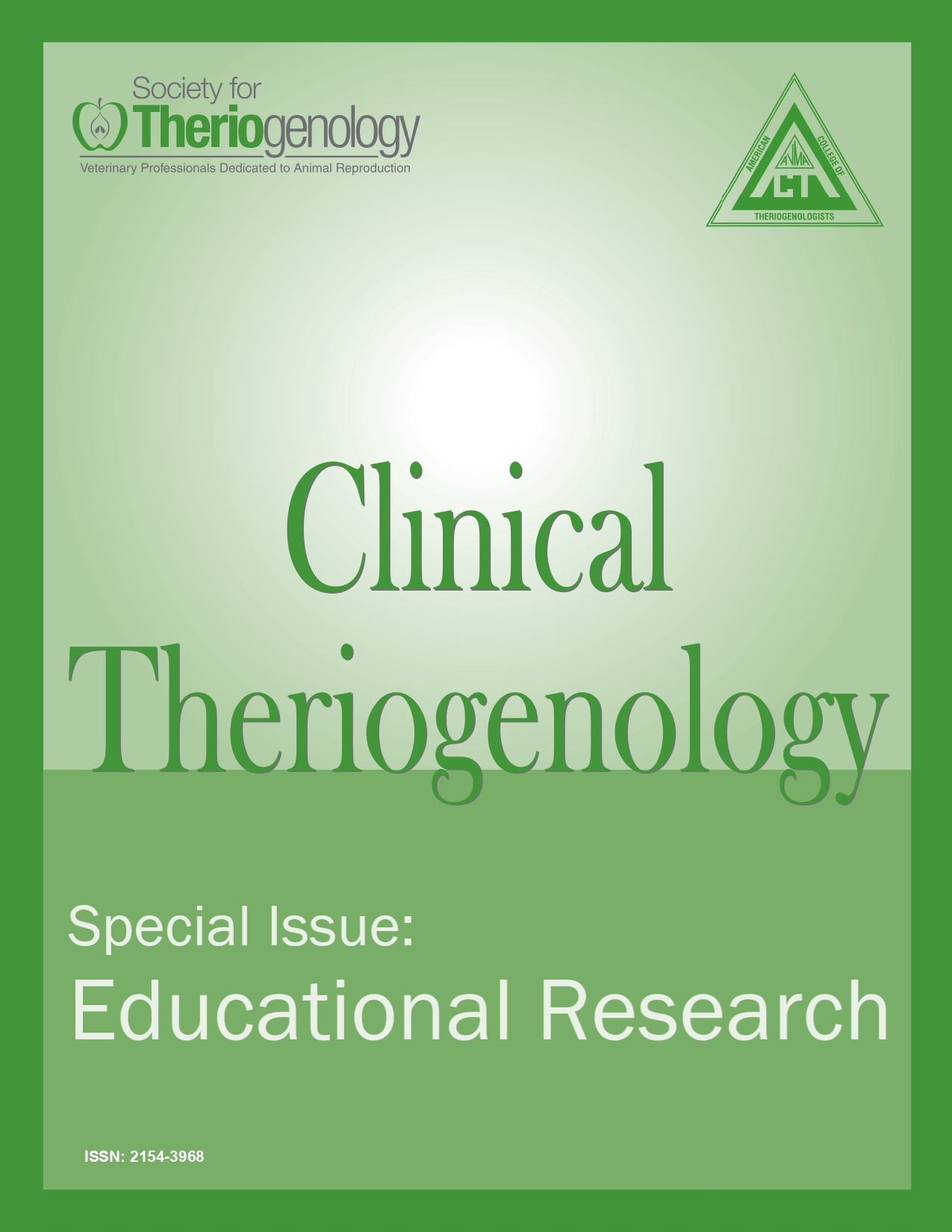Year-one knowledge and skills in theriogenology: a preliminary study
Abstract
Veterinary practitioners who had just completed their first postgraduate year of work were surveyed to determine what knowledge and skills in theriogenology were used in that first year with the goal of helping veterinary schools prioritize components of the model core curriculum in their curricular offerings. The survey was based on a core curriculum created by the American College of Theriogenologists. Forty-eight surveys were returned; response rate could not be calculated. The majority of participants were in small animal practice but a wide range of employment experiences was represented. The only component listed as very commonly used in all practice types was ‘reproductive anatomy in any species.’ Reproductive work in general was not managed by small animal practitioners, reflecting current caseload in most small animal primary care clinics in the United States, which focuses on sterilized small animal patients. Reproductive work was more common among large animal practitioners, particularly those in mixed and food animal practices. The core curriculum is comparative and in this study many of the components rated as being used very commonly required input from disciplines outside of theriogenology for training, including anesthesia, surgery, and medical imaging. It is important for those teaching theriogenology to be an active part of all conversations about curriculum at academic institutions and that the comparative nature of theriogenology be stressed to ensure all necessary components are being taught to prepare graduates for theriogenology work in practice.
Downloads
References

This work is licensed under a Creative Commons Attribution-NonCommercial 4.0 International License.
Authors retain copyright of their work, with first publication rights granted to Clinical Theriogenology. Read more about copyright and licensing here.







